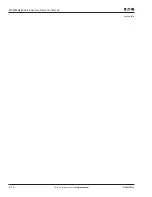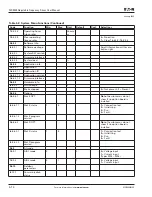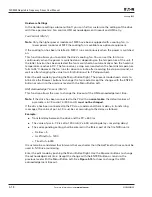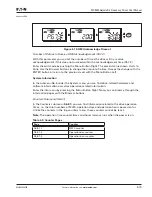
SLX9000 Adjustable Frequency Drives User Manual
5-12
For more information visit:
www.eaton.com
MN04003020E
January 2009
Fault Types
The drive has two types of faults. These types differ from each other on the basis of the
subsequent behavior of the drive. See
Table 5-7
.
Figure 5-9: Fault Display
Table 5-7: Fault Types
Note:
Fault Codes are listed in
Appendix A
.
Fault History Menu (H5)
You can enter the Fault History menu from the Main Menu by pressing Menu Button Right
when the location indication
H5
is visible on the keypad display.
All faults are stored in the Fault History menu where you can browse them with the Browser
buttons. You can return to the previous menu any time by pressing Menu Button Left.
The memory of the drive can store a maximum of 5 faults in order of appearance. The latest
fault is indicated by H5.1, the one before that by H5.2 and so on. If there are 5 uncleared faults
in the memory, the next fault will erase the oldest fault from the memory.
Pressing the ENTER button for about 2 to 3 seconds resets the whole fault history.
Figure 5-10: Fault History Menu
Fault Type Symbol
Meaning
A (Alarm)
This type of fault is a sign of an unusual operating condition. It does not cause
the drive to stop, nor does it require any special actions. The “A fault” remains
in the display for about 30 seconds.
F (Fault)
An “F fault” makes the drive stop. Actions need to be taken to restart the drive.
STOP
READY
I/O Term
STOP
READY
I/O Term
STOP
READY
I/O Term
STOP
READY
I/O Term
STOP
READY
I/O Term
STOP
READY
I/O Term
Press to Reset
ENTER
reset
Summary of Contents for Cutler-Hammer SLX9000 Series
Page 1: ...SLX9000 Adjustable Frequency Drives User Manual Effective January 2009 Supersedes October 2008...
Page 2: ......
Page 171: ......
















































